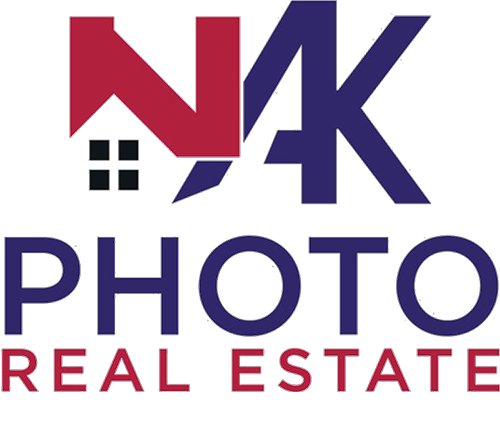Walk past a construction site, and what do you see? Dust, cranes, maybe a couple of workers in hard hats shouting over heavy machinery. But through the lens of a skilled photographer, that same site transforms into a story. That’s the magic of construction photography.
At its core, construction photography captures the evolution of a structure from blueprint to reality. It’s a visual journal, one that appeals not only to builders and architects, but also to marketers, developers, and buyers. And if you’re in real estate photography, this skillset isn’t just nice to have, it’s critical.
Why Construction Photography Matters in Real Estate
Let’s get one thing straight people buy stories, not just spaces.
Whether it’s a luxury condo in midtown or a sprawling suburban complex, potential buyers want to feel connected to the property. That’s where construction photography comes in. It captures more than bricks and beams. It captures vision, progress, and potential.
Buyers might never walk through a half-finished project, but show them a stunning, well-composed image of that same space under construction, and they’ll start to imagine their future there.
It’s Not Just Pictures—It’s Strategy
Great construction photography does a few key things:
- Builds trust: Regular photo updates show transparency and progress.
- Attracts investors: High-quality visuals make your pitch decks and marketing materials stand out.
- Documents everything: From groundbreaking to handover, these photos serve as historical and legal records.
- Boosts sales: Listings with progress shots often get more engagement.
I’ve seen developers who started adding professional photos of ongoing builds into their investor reports. Guess what happened? Their next funding round filled up faster than the previous one. Coincidence? Probably not.
What Sets It Apart From Traditional Real Estate Photography
You might think, “I already do real estate photography, isn’t that enough?” Not quite.
Real estate photography focuses on finished products clean spaces, styled interiors, wide-angle shots. Construction photography, on the other hand, is raw, gritty, and full of character.
Lighting is unpredictable. You’re often working in tough conditions, with equipment around and people moving constantly. But that’s the beauty of it. You’re capturing real work in motion.
Tips to Master Construction Photography
So how do you get it right? Here’s what separates amateurs from pros in this niche:
1. Understand the Build Timeline
This isn’t a one-and-done job. Construction projects span months, even years. Get familiar with the schedule and plan your shoots accordingly foundation work, framing, interiors, finishing touches.
2. Go Beyond Wide Shots
Sure, wide shots show the whole site. But don’t skip the details. Cables, welds, concrete pours, even worker expressions these create emotional and visual richness.
3. Invest in the Right Gear
A DSLR with a good lens is the bare minimum. Drones? Game-changer. Aerial shots give context and scale that ground shots simply can’t.
Tripod for long exposures, filters for contrast on bright days, maybe even a hard hat cam for some immersive angles. If you’re serious, gear matters.
4. Shoot in the Golden Hour
Just because it’s a construction site doesn’t mean you can’t be artistic. Early morning or late afternoon light softens shadows, highlights textures, and gives even the most rugged scenes a cinematic glow.
5. Prioritize Safety
This should go without saying, but always wear proper gear and follow site rules. You’re not there to get the perfect shot at the cost of personal safety.
Construction Photography for Marketing: A Hidden Goldmine
If you’re in marketing, you should be drooling over the content opportunities here.
Behind-the-scenes shots? Perfect for social media. Progress visuals? Ideal for newsletters. Time-lapse videos of construction from start to finish? That’s a YouTube magnet.
Smart real estate agents are already partnering with construction photographers to create dynamic campaigns that go far beyond standard listings.
Real Estate Professionals, Take Note
Here’s where it gets juicy for you.
Imagine your listing has not just glossy photos of the completed condo, but a visual diary of how it came to be. That adds credibility and emotional depth. Buyers feel like they’ve witnessed the journey.
And for those in commercial real estate? Show potential tenants or investors the care and scale involved in building your project. Use construction photography as proof of commitment and capability.
Don’t DIY—Hire a Pro
Sure, iPhones are great. But they’re not built for this.
Construction photography is a skill. It requires technical know-how, creative vision, and a deep understanding of building environments. Hiring a pro might cost a bit upfront, but the return in engagement, trust, and sales? That’s the real payoff.
Besides, would you trust a property valuation done by someone who just “likes numbers”? Exactly.
So What’s the Bottom Line?
Construction photography is way more than just snapping pics of half-finished buildings. It’s an emotional bridge between concept and completion. It’s proof that progress is happening. And in the world of real estate photography, it’s a powerful storytelling tool.
If you’re a developer, marketer, or agent not leveraging construction photography yet, you’re leaving serious value on the table.
Because at the end of the day, people don’t just want to buy property. They want to buy into a vision. And it’s your job to show them what that looks like frame by frame.




